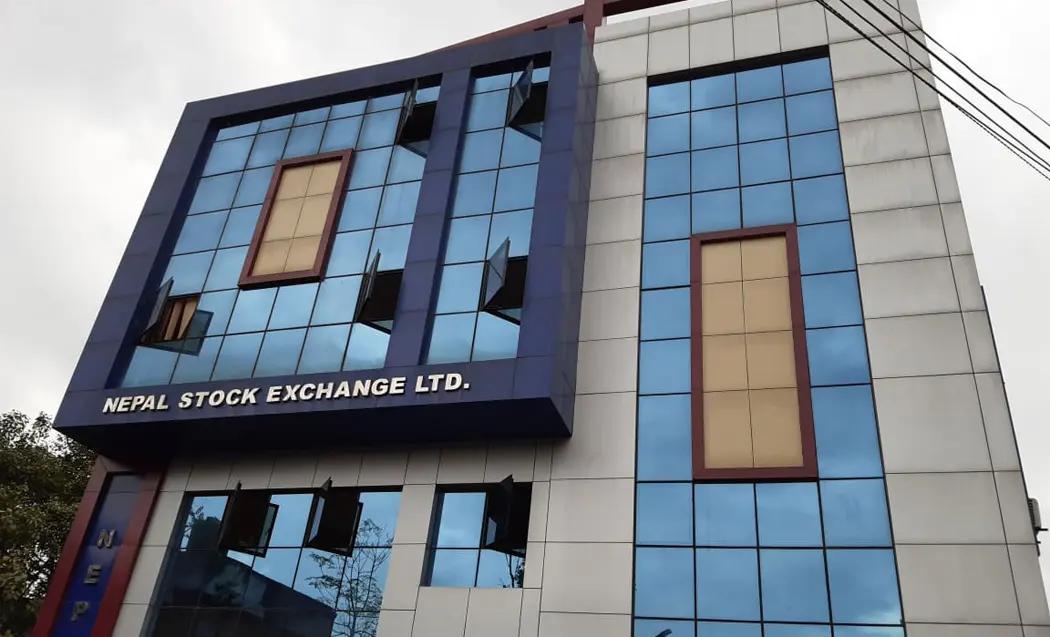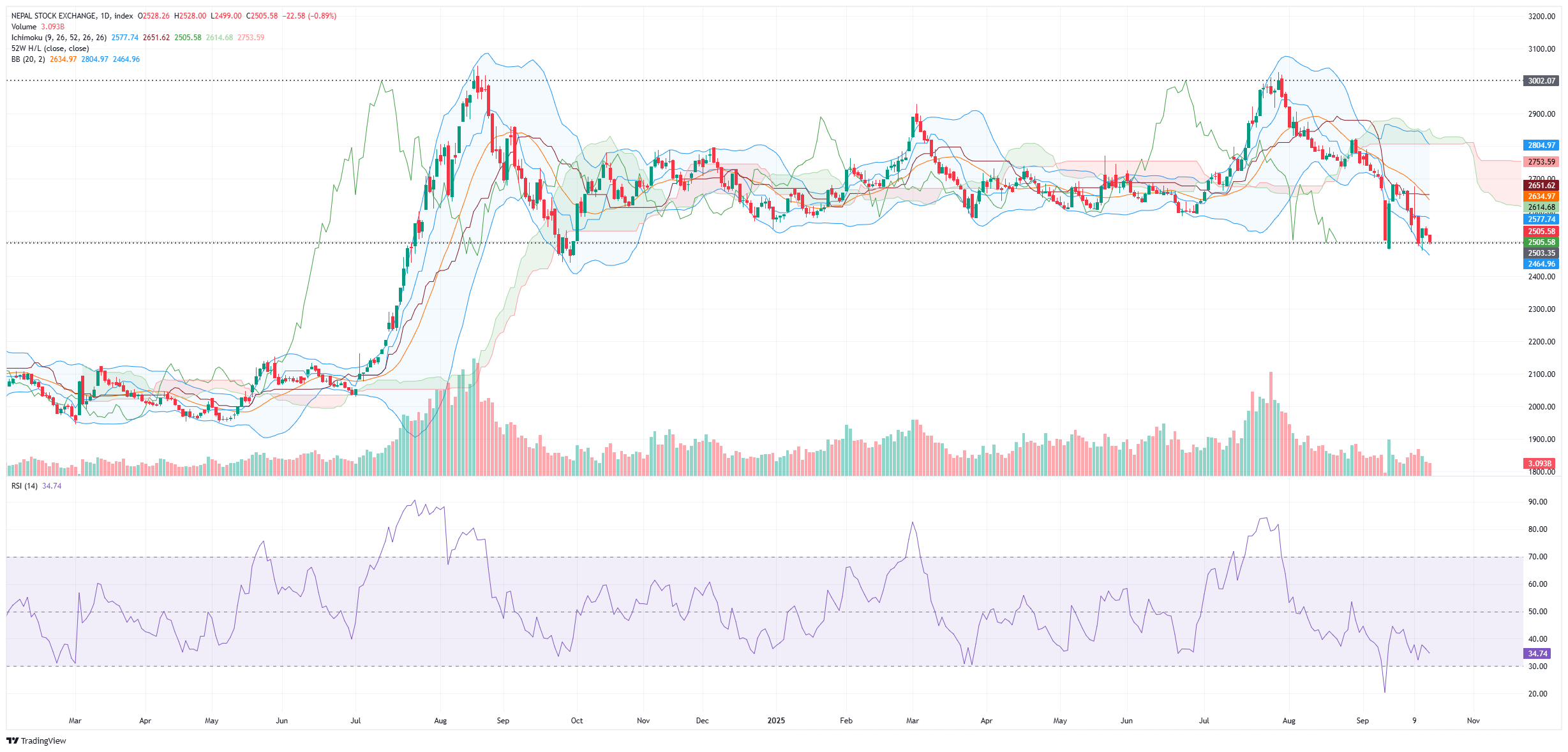NEPSE Continues to Decline for Second Consecutive Day; Investor Confidence Remains Weak Despite SEBON’s Reform Package
Author
NEPSE trading

The Nepal Stock Exchange (NEPSE) continued its downward trajectory for the second consecutive day. On Wednesday, the NEPSE index fell by 22.58 points to close at 2,505.58 points, following Tuesday’s drop of 19 points. The overall trading turnover also declined, with total transactions amounting to Rs. 3.10 billion, down from Rs. 3.36 billion the previous day. This consistent decline reflects the persistent lack of confidence among investors.
Despite the Securities Board of Nepal (SEBON) announcing a reform package and pledging to address investor demands, the market has yet to respond positively. Investors say the announcements have not yet translated into tangible actions, leaving morale low.
SEBON’s Nine-Point Reform Plan Fails to Lift Sentiment
SEBON recently unveiled a nine-point capital market reform action plan, based on recommendations from the Capital Market Reform Taskforce. Among these, four actions are to be implemented immediately, while the remaining are targeted for completion by mid-Mangsir (around late November).
According to SEBON’s timeline:
The margin trading system through brokers will be implemented within three months.
ISIN code uniformity will be introduced through CDS & Clearing Ltd.
Bonus share tax settlement will be made the responsibility of issuing companies.
Payment uniformity measures will be enforced to ensure timely settlements between investors and brokers.
Additionally, investors will soon be able to open multiple beneficiary (DEMAT) accounts, a securities offense investigation mechanism will be set up, and financial literacy programs will be expanded through workshops and training sessions.
However, despite these promises, most investors remain skeptical until visible, practical implementation occurs.
Market Performance: 12 Out of 13 Sub-Indices Decline
Out of 13 subgroups, 12 saw declines, with only the mutual fund subgroup showing marginal growth. The trading subgroup recorded the largest drop of 2.09%, while development banks, finance, hotels & tourism, hydropower, and others each fell by over 1%.
Two companies — Samaj Lagubitta Bittiya Sanstha and Bindhyabasini Hydropower Development Company — hit their negative circuit levels. Meanwhile, Samata Domestic Microfinance rose 6.93%, making it the day’s top gainer.
By turnover, Nepal Reinsurance Company (NLICL) topped the chart with Rs. 205.4 million worth of trades.
Reforms Still on Paper — Market Awaits Real Action
SEBON claims it has begun implementing the taskforce’s recommendations submitted to the Ministry of Finance. However, investors argue that real stability will return only after tangible progress is seen.
Plans like the Settlement Guarantee Fund, Auction Market, and the Book Building Method are still confined to documents. Similarly, the process to standardize IPO and rights share issuance remains incomplete. Market analysts believe these delays are preventing genuine confidence from returning.
Analysts’ View: “Investors Watch Deeds, Not Declarations”
According to securities analyst Sandeep Chaudhary, mere announcements cannot restore trust.
“Investors judge by action, not promises. The reforms must move from paper to practice,” he said.
Technically, the market remains weak. The NEPSE index has a strong support zone between 2480–2490 points. If this level breaks, further decline is likely. The Relative Strength Index (RSI) currently stands at 34.74, indicating oversold conditions but still lacking reversal signals.

Broker Activity: Mixed Buying and Selling Trends
An analysis of broker data shows a mixed pattern. Among the top 10 brokers, five were net buyers, while five were net sellers.
Brokers 58, 45, 42, 48, and 62 led in selling activity.
Brokers 34, 55, 49, 28, and 44 were the major buyers.
Stock-wise, Global IME Bank (GBIME) saw the highest investor interest — broker no. 4 accounted for 65% of total buy volume, equivalent to 117,000 shares. Similarly, SSH Laghubitta (SSHL) saw 40,000 shares purchased (40% of its total buy volume) via broker no. 32. On the sell side, broker no. 58 sold 92,000 shares of Global IME Bank.
Meanwhile, the NepseTrading mAI Lite indicator flashed a yellow light, signaling a “Wait and Watch” market stance — suggesting that traders should stay cautious and observe market direction before entering new positions.
Nepal’s stock market now stands at a critical juncture where execution outweighs announcements.
While SEBON’s reforms signal intent, trust must be rebuilt through visible, consistent actions. Investors and analysts agree that transparency, strong regulation, and timely implementation are essential for restoring stability and long-term growth.
At present, NEPSE’s decline underscores a deeper issue — the gap between policy and confidence. Only when words translate into results will the market regain its lost momentum.


